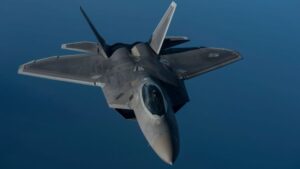Drone Warfare is Here to Stay
The 21st Century has watched Unmanned Systems flourish and rapidly advance in conventional and unconventional capacities for the United States, its allies, and foreign conventional and unconventional threats. We experienced superiority for many years, yet now our adversaries have leveled the playing field. Conventional near peer competitors are sinking large amounts of emphasis and funding into these systems. The technological advances have exponentially increased the development and employment of these unmanned systems. Unconventional threats and bad actors are now able to rapidly build and deploy crude systems on a shoestring budget.
Unmanned Aerial Systems
Skydio leads the way in military UAV.
The US has enjoyed superiority with Unmanned Aerial Systems for the majority if this century. They have been used for aerial surveillance through drones such as the predator and reaper to give commanders a view of the battlefield which was once impossible. The surveillance drones eventually evolved into a means for strikes on targets across the battlespace. The war in Ukraine has shown development and deployment of small, affordable, and lethal aerial drones in offensive capabilities. These smaller aerial drones have wreaked havoc upon conventional ground forces, and they demand attention for reconnaissance, surveillance, offensive, and defensive operations of forces.
Unmanned Surface Systems
There has also been widespread advancement in the field of unmanned surface systems. Small unmanned surface boats have been investigated and developed by the Navy for some time. The Navy must pay attention to the use of surface unmanned systems, and they see it both as an opportunity and a threat to conventional Naval forces across the vast surface area of the seas. Programs such as the Ghost Fleet are under review and development, although many of the details are still kept close to the chest. The Ukrainians have leveraged these surface technologies, combined them with asymmetric warfare tactics, and employed them against a far superior Russian Naval Fleet. Much attention and fear has emerged as a result of these advancements and applications.
Saildrone Surveyor USV
Unmanned Underwater Systems
Subsurface drones also are a priority for Naval Operations. These systems present amazing research and development potential while also demanding defensive countermeasures to be used for force protection. An unmanned subsurface system could potentially he used for reconnaissance, surveillance, repairs, offensive, and defensive operations. The employment of highly specialized underwater systems will also greatly influence the Navy’s unmanned Ghost Fleet.
Undersea Manta drone prototype. Image Credit: DARPA
New Military Specialties for Conventional Ground and Naval Forces
The United States Armed forces has the opportunity to exploit such systems and deploy them for a variety of missions and capabilities. The force protection characteristic demands high technical competence and priority for both conventional and unconventional operations. Military personnel require the ground and naval forces to lead the world in unmanned system development, operations, and deployment throughout the force. Each branch will likely find that the needs of each branch will lead to the emergence of new conventional military specialties. We have to lead the world in research, development, training, operations, and deployment of unmanned systems and their assigned personnel.
New Military Specialties Under AFSOC and Navy Special Warfare
Unmanned systems also present a huge opportunity for forces in the Special Operations community to leverage and employ for current and future operations. I look to the Air Force Special Operations specialties to really find a direction that may yield exponentially useful and lethally potent unmanned capabilities. The Special Operations Community has the best personnel with the highest levels of training. The emergence of unmanned systems allows the community to leverage this technology for asymmetric offensive and defensive warfare. In the same manner that AF personnel are embedded across the community for highly technical and essential missions such as close air support, unmanned system operations and countermeasures create the need for new specialties with the various branches within the special operations teams. The Navy has unique requirements which demand a military specialty focused on aquatic unmanned systems that enhance the lethality and defensive capabilities for Naval Operations. I would speculate that this task organization and training program would best serve the needs for Special Operations across the branches.
—
Drone Warfare is Here to Stay
The 21st Century has watched Unmanned Systems flourish and rapidly advance in conventional and unconventional capacities for the United States, its allies, and foreign conventional and unconventional threats. We experienced superiority for many years, yet now our adversaries have leveled the playing field. Conventional near peer competitors are sinking large amounts of emphasis and funding into these systems. The technological advances have exponentially increased the development and employment of these unmanned systems. Unconventional threats and bad actors are now able to rapidly build and deploy crude systems on a shoestring budget.
Unmanned Aerial Systems
Skydio leads the way in military UAV.
The US has enjoyed superiority with Unmanned Aerial Systems for the majority if this century. They have been used for aerial surveillance through drones such as the predator and reaper to give commanders a view of the battlefield which was once impossible. The surveillance drones eventually evolved into a means for strikes on targets across the battlespace. The war in Ukraine has shown development and deployment of small, affordable, and lethal aerial drones in offensive capabilities. These smaller aerial drones have wreaked havoc upon conventional ground forces, and they demand attention for reconnaissance, surveillance, offensive, and defensive operations of forces.
Unmanned Surface Systems
There has also been widespread advancement in the field of unmanned surface systems. Small unmanned surface boats have been investigated and developed by the Navy for some time. The Navy must pay attention to the use of surface unmanned systems, and they see it both as an opportunity and a threat to conventional Naval forces across the vast surface area of the seas. Programs such as the Ghost Fleet are under review and development, although many of the details are still kept close to the chest. The Ukrainians have leveraged these surface technologies, combined them with asymmetric warfare tactics, and employed them against a far superior Russian Naval Fleet. Much attention and fear has emerged as a result of these advancements and applications.
Saildrone Surveyor USV
Unmanned Underwater Systems
Subsurface drones also are a priority for Naval Operations. These systems present amazing research and development potential while also demanding defensive countermeasures to be used for force protection. An unmanned subsurface system could potentially he used for reconnaissance, surveillance, repairs, offensive, and defensive operations. The employment of highly specialized underwater systems will also greatly influence the Navy’s unmanned Ghost Fleet.
Undersea Manta drone prototype. Image Credit: DARPA
New Military Specialties for Conventional Ground and Naval Forces
The United States Armed forces has the opportunity to exploit such systems and deploy them for a variety of missions and capabilities. The force protection characteristic demands high technical competence and priority for both conventional and unconventional operations. Military personnel require the ground and naval forces to lead the world in unmanned system development, operations, and deployment throughout the force. Each branch will likely find that the needs of each branch will lead to the emergence of new conventional military specialties. We have to lead the world in research, development, training, operations, and deployment of unmanned systems and their assigned personnel.
New Military Specialties Under AFSOC and Navy Special Warfare
Unmanned systems also present a huge opportunity for forces in the Special Operations community to leverage and employ for current and future operations. I look to the Air Force Special Operations specialties to really find a direction that may yield exponentially useful and lethally potent unmanned capabilities. The Special Operations Community has the best personnel with the highest levels of training. The emergence of unmanned systems allows the community to leverage this technology for asymmetric offensive and defensive warfare. In the same manner that AF personnel are embedded across the community for highly technical and essential missions such as close air support, unmanned system operations and countermeasures create the need for new specialties with the various branches within the special operations teams. The Navy has unique requirements which demand a military specialty focused on aquatic unmanned systems that enhance the lethality and defensive capabilities for Naval Operations. I would speculate that this task organization and training program would best serve the needs for Special Operations across the branches.
—
Disclaimer: SOFREP utilizes AI for image generation and article research. Occasionally, it’s like handing a chimpanzee the keys to your liquor cabinet. It’s not always perfect and if a mistake is made, we own up to it full stop. In a world where information comes at us in tidal waves, it is an important tool that helps us sift through the brass for live rounds.



